Getting started with HERB GARDENING FOR BEGINNERS with ZERO EXPERIENCE isn’t very comforting. Don’t worry! We’re here to guide you with all the BASIC CONCEPTS & TIPS for gardening.
We are well occupied with the KNOWLEDGE for gardening. Our expertise KEEPS YOU from MAKING MISTAKES beforehand.
We have developed and follow easy-to-perform techniques that work wonders. Depend on us completely plus follow our directions. And YOU GET AMAZING RESULTS for herb gardening!
Dissolve all your uncertain thoughts here with us.
You are going to learn the main types of herbs, reasons for growing herbs, a list of plants & much more.
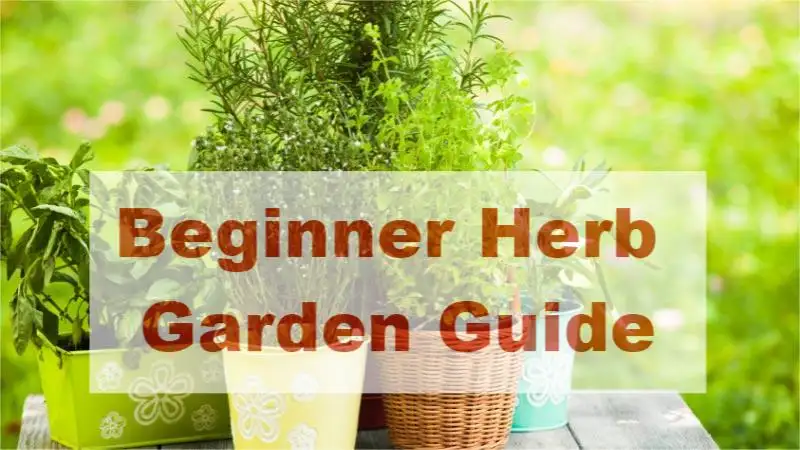
What Are The Main Types of Herbs to Grow?
Let’s get to it. We are listing 7 (there can be more!) main types of herbs for beginners here: Parsley, Rosemary, Mint, Basil, Chives, Thyme, Lavender, and Oregano.
You might’ve heard about some of these essential herbs. You can grow them in your garden for a start. But there are various species and varieties of each one of them.
Every other plant has various and distinguished features. (we are not saying you learn about every one of them!) Brush through their name list if you are curious about it in ENCYCLOPEDIA!
Hope you are not bored. (** what’s so wrong with learning names, huh! Yeah, sure, if it interests you!!**) Also learn in detail about some of the herbs mentioned here later in the article. Let’s get to the basics now!
How to Start A Herb Garden For Beginners?
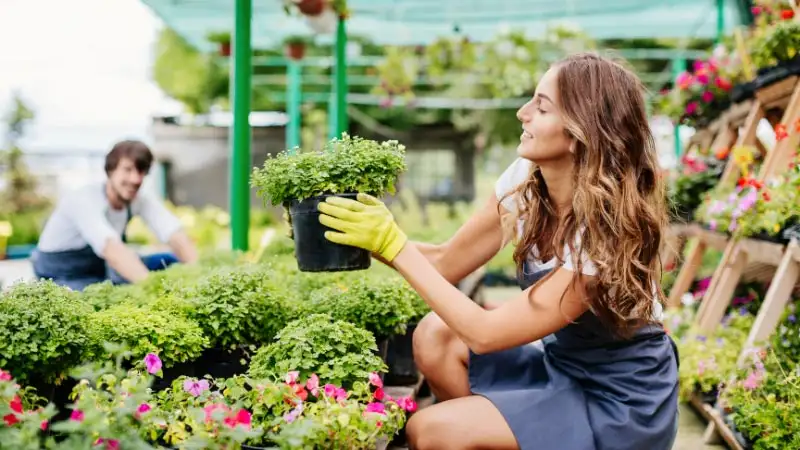
First, COLLECT THESE THINGS:
1. Herb plants or seeds (which ones we’ll get to this later!)
2. Pots & protective liners
3. Soil (you can buy a bag of potting soil)
4. Trowel
5. Herb markers
6. A grow light (if your house lacks sunlight)
Your NEXT STEPS are as follows:
1. Find A Place! – Look for a full sun place with well-drained soil (when you plant outside!). And for indoors- find which is the brightest at the window.
2. Begin Your Setup – Sow Sapling PLANTS in the well-drained soil to set up. Or Plant SEEDS (may take 2-4 weeks!).
3. Water Plants – Watering your plants is easy-peasy. Follow your intuition. And keep the soil moist enough.
Warning: Avoid OVER or UNDER-WATERING (look for DRIED or DISCOLORED LEAVES!). Follow these TIPS:
• Plants in large pots dry faster than those in smaller ones.
• Choose pots that have drainage holes to prevent overwatering.
• Water the entire root area into your pot (until water comes out of the drainage hole).
4. Do Regular Pruning – Plants need pruning AS you would USE HERBS in your FOOD. It ENCOURAGES GROWTH. Use KITCHEN SHEARS or PINCH (remove!) main stem from leaf nodes (these are nodes with no left & right nodes).
Warning: NEVER REMOVE more than A FOURTH OF YOUR PLANT.
Top 5 Considerations For A Herb Garden
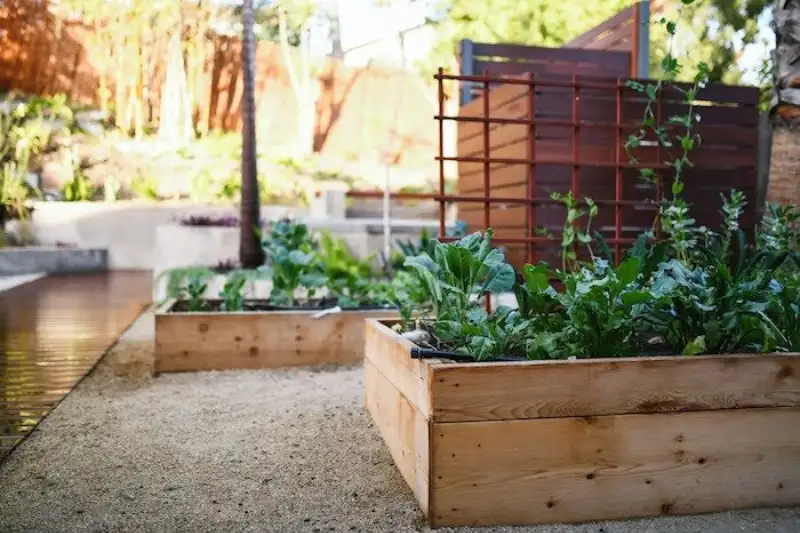
We are (re)iterating 5 top things to consider for beginners herb gardening:
1. Always buy starter plants
We do mention sowing seeds before. But here’s the catch. You might think that sowing seeds are cheaper but very challenging! Seeds need a specific environment for germination. And hardening off before you plant them. (**I thought I could grow it, Oh shit**).
Buy sapling plants for basic herbs, such as parsley, lemon balm, and rosemary, for the same rate as seeds. They have more chances of success as compared to seeds.
2. Don’t use quality soil
You use any well-drained soil to plant herbs. Don’t spend any money on purchasing quality (rich) soil. It is because most herbs don’t need special soil for their growth. The only thing REQUIRED is that the soil is WELL-DRAINED.
Herbs-don’t-like-quality-soil at all! But in case your soil is HEAVY, for example, clay soil. It is best if you take measures like mixing some compost or organic material for better draining. Any other lightweight soil can work fine.
3. Finding a suitable location
This is crucial for growing herbs. We gave a brief in the previous section about this. But there are other factors for choosing a place (besides requiring full sun, we’ll discuss why!). Imagine if you have grown beautiful herbs at the far end of your garden.
And you have to travel there each time you need them. (damn, my legs hurt :<) So it is best when herbs stay near your kitchen- as you use herbs in your food! Growing them within reach will be beneficial.
4. Provide enough sunlight to your herbs
We emphasize the importance of the sun for herbs. Let’s cut to the chase and learn the reason why. Most of the culinary herbs are sun lovers!
Now, this makes sense. Ensure it is a full sun location and receives at least 6-8 HOURS of SUNLIGHT when growing herbs outside.
You investigate the area at different times of the year. Consider if you are seeing the place during early spring & TREES ARE YET TO GROW nearby. It could become shady during the summers.
5. Pruning is crucial for herbs
We gave a few tips in the previous section. But this is the HARDEST THING you would do, especially when you are not cooking! Let’s face it down here.
Trimming your herbs can be a TEDIOUS TASK, but it leads to FOLIAGE GROWTH which makes them FULL & BUSHY!
Herbs tend to set flowers after growing. And flowers restrict foliage growth from their stems. Also, REUSE your pruned cuttings! USE them in COMPOST, dry them for OFF-SEASON, or use them as GREENERY FILLING in a FLORAL ARRANGEMENT.
Herb Garden For Beginners – Why Grow Herb?
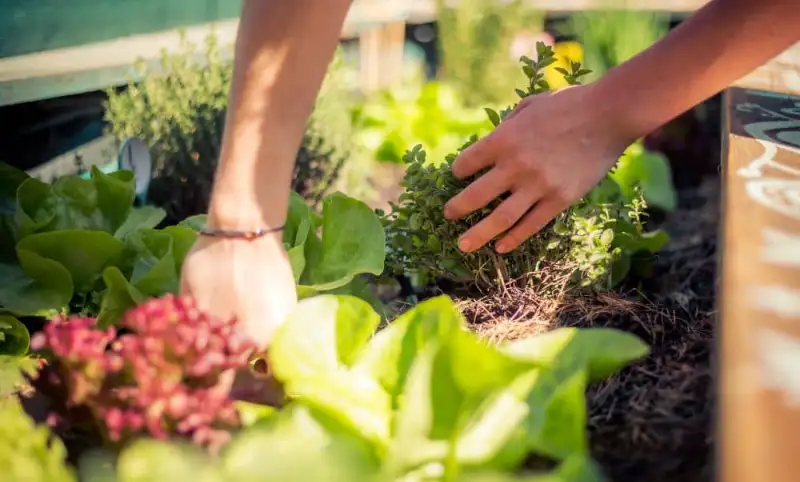
Let’s get to the reasons to grow herbs for beginners.
1. Herbs are easy to grow.
GROWING HERBS IS EASY as compared to VEGETABLES or FLOWERS. Herbs can be grown indoors, in pots, or even outside in the GROUND. Don’t need much fertilizer & can WITHSTAND DIFFERENT TEMPERATURES. It takes less effort to grow.
You use either sapling plants or seeds, and their plants give instant herbs. MANY HERBS can be grown in a SINGLE POT. So, don’t hesitate to make your gardens even when living in an apartment!
2. Herb garden is good for health.
Many herbs with MEDICINAL PROPERTIES improve your health in many ways. MEDICINAL HERBS include chamomile, lavender, lemon balm, oregano, peppermint, and cilantro. You use them for flavoring your dishes.
The benefits of the last three of them are as follows:
• Peppermint: Use it in teas. It helps BOOST MOOD, EASE NAUSEA, IMPROVE FOCUS, and HELP DIGESTION.
• Oregano: It contains HIGH-ANTIOXIDANTS. Known as an IMMUNE BOOSTER, ANTIFUNGAL, and ANTIBACTERIAL.
• Cilantro: Good for DETOXIFICATION OF TOXIC HEAVY METALS.
3. Saves you money from growing herbs
Growing your herbs saves you money and waste. You never need to buy lots of herbs from the market. NO MONEY WASTAGE! NO HERB WASTAGE!
It costs you fair when you buy fresh herbs or dried herbs. And purchasing organic herbs has an even higher price. Herbs are CHEAP PLANTS to grow.
Vegetables are cost-efficient to grow as well. But there are many STARTUP COSTS! Herbs can be GROWN FOR YEARS by purchasing a packet of SEEDS FOR A FEW DOLLARS!
4. Get fresher herbs than stores.
You have bought herbs from grocery stores. We are damn sure you have found them WILTED. And this is very common! What happens when you grow your garden?? You get to have fresh herbs each time!!
HERBS bought from stores are less flavor wise as well. While your HOME GROWN HERBS are FULL OF FLAVORS and NUTRIENTS. You taste a fresh flavor with your hand-picked herbs minutes before you cook.
Herb Garden For Beginners – How to Choose Herbs for Your Garden?
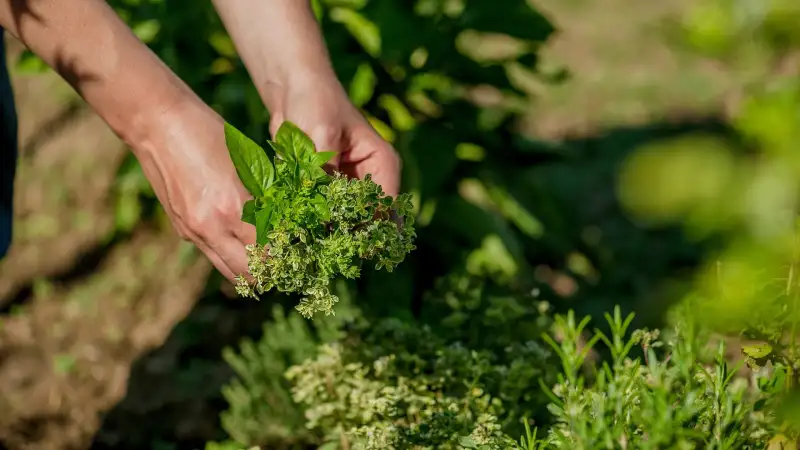
Choosing herbs for gardening can be daunting when you are a beginner. What to buy? What not to?? RELAX!! Make a list of herbs you are likely to use. And here are three types of herbs you can select from (** I got saved!**):
1. Culinary herbs are the most valuable herbs used in cooking. You use them for both flavoring and garnishing. They are best for your kitchen. They include parsley, sage, mint, basil, rosemary, chives, lemon balm, oregano, and cilantro.
2. Ornamental herbs have the most beautiful and bright-colored flowers, leaves, and shrubs. You can thus use them for decoration. These herbs are lavender, thyme, mint, and chives.
3. Aromatic herbs have a pleasant smell/aroma even after drying up. Common aromatic herbs are rosemary, mint, basil, and lovage.
Now CHOOSE ACCORDING TO YOUR OWN NEEDS!!
6 Easiest Plants to Grow in Herb Garden For The First Time
Here are the six easiest plants you can grow in your herb garden for the first time:
1. Parsley
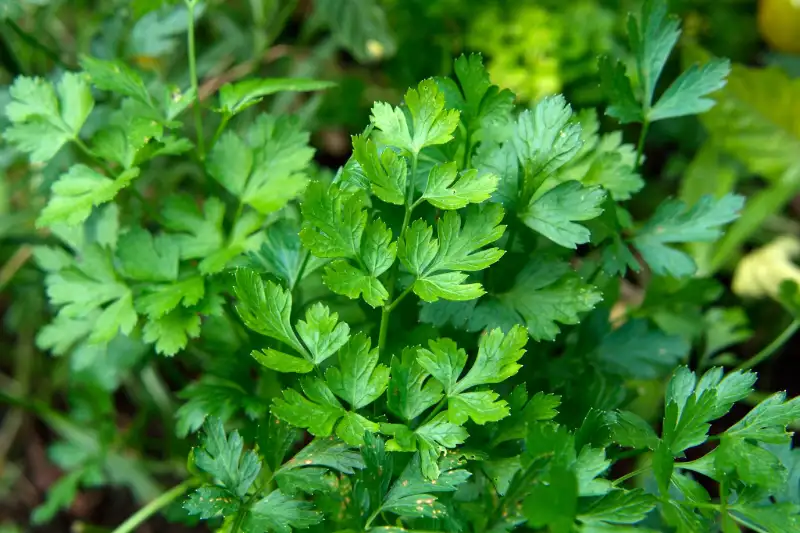
This is famous for garnishing food. But it is rich in nutrients. It contains Vitamins A, C, and K, plus FOLATE and healthy ANTIOXIDANTS. Planting this herb in well drained soil will benefit you. You can grow it in partial shade or full sun both.
You make all types of salads, dips, and soups. Not Only This- Smoothies as well! It is a biennial – plant with ONLY 2 YEARS OF LIFE CYCLE. During the first year – it produces ONLY LEAVES.
In the second growing season – it FLOWERS & produces SEEDS. It’s better to HARVEST parsley ANNUALLY FOR LEAVES. (the arrival of flowers makes leaves bitter).
2. Rosemary
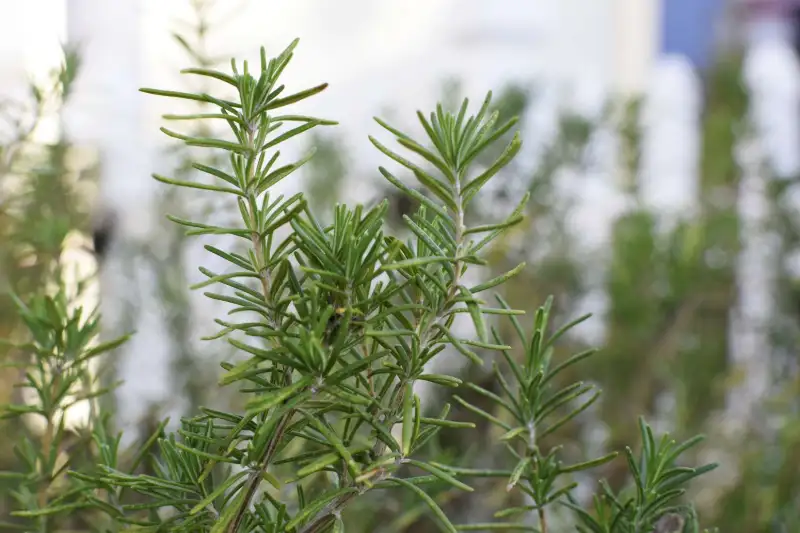
This is a perennial herb. Meaning these plants come back every year without replanting them. It is fragrant and is suitable for a Mediterranean-style garden.
Rosemary has EVERGREEN LEAVES. It prefers full sun over partial shade with well-drained soil. You can pick these leaves throughout the year anytime and use its leaves to flavor your soup and meat.
Another way is to use its leaves for making TEA! It would be best if you kept these plants FULLER and COMPACT by trimming the stems. Do this when flowers are starting to vanish. Or else your plant will become leggy if you don’t do this.
3. Mint
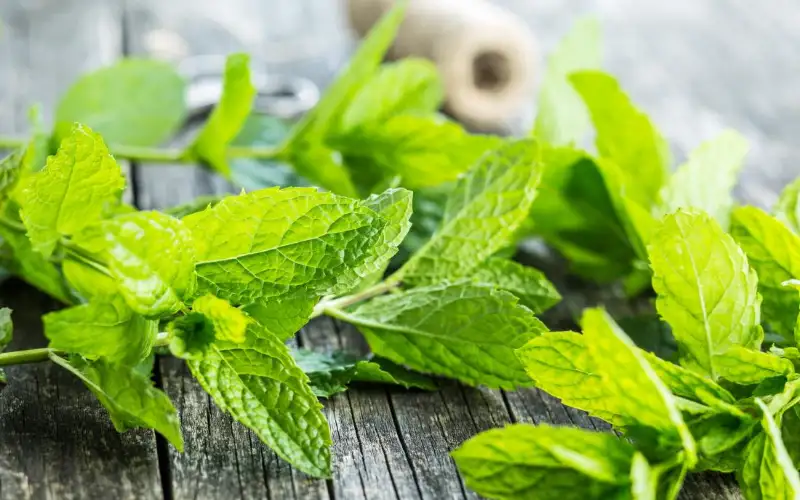
This plant is a perennial herb and is also somewhat fragrant (but not that nice, for some people might be ;>). It can be grown using a seed. But it would be different from the parent plant.
So it’s better to buy sapling plants. But there is one limitation. Mint tends to spread.
How to keep its growth in check?? Plant it in a pot. It stops the roots from spreading and you must keep them in full sun or partial shade. And pinch flower buds for more leaf growth.
4. Basil
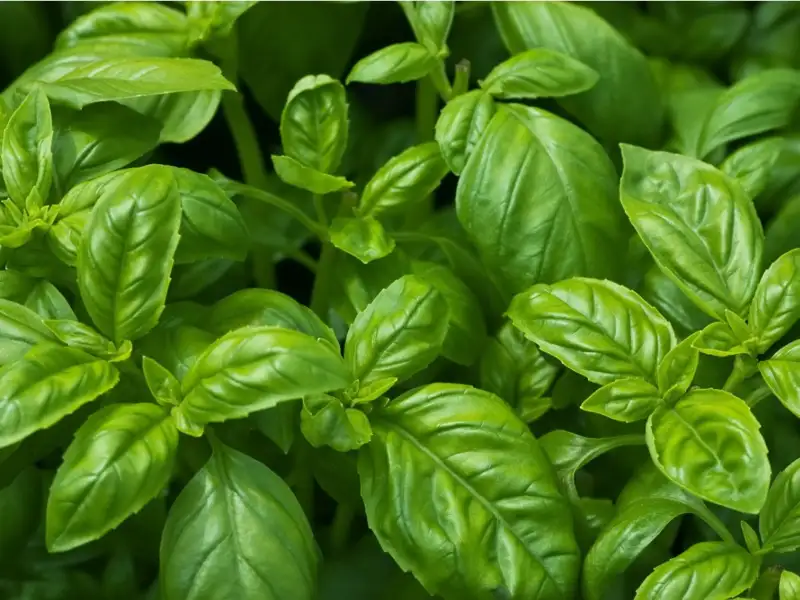
This is one of the most popular herbs. The reason is – It’s VERY TASTY Plus, you ADD IT TO A VARIETY OF DISHES and DRINKS. You sow seeds into potting compost on a full sun window ledge. Keep it in partial shade during the hottest time of the day.
We tell you to REMOVE THE GROWING TIP from the plant. Do this when the plant is 15cm tall. It results in BUSHIER GROWTH. We recommend growing it in the garden when the weather becomes warm. Keep this plant sheltered.
5. Chives
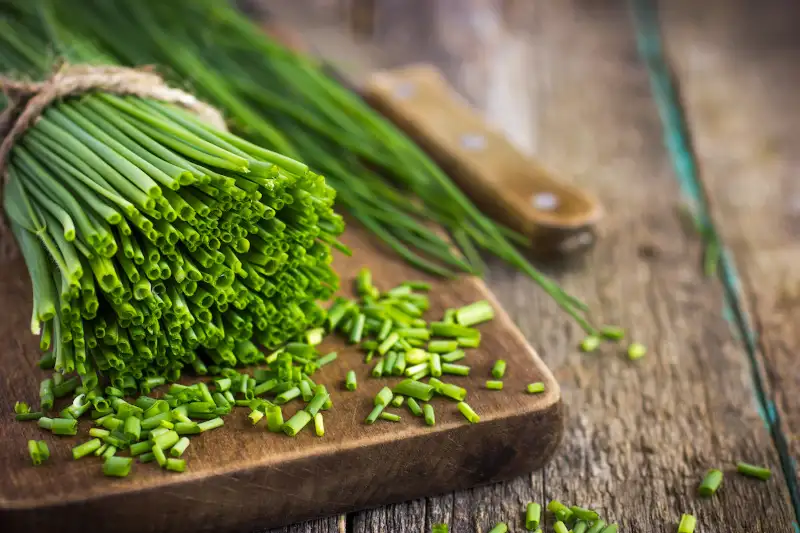
These perennial herbs are relatives of the onion family. They have narrow and pointed leaves and lovely PINK or PURPLE FLOWERS. You can also use it in some food dishes. You can SOW THEIR SEEDS IN THE GROUND during MARCH & APRIL!
Please keep them in the full sun with rich well drained soil. Water them in enough quantities and moisten the soil enough. You keep them sheltered as well or with partial shade. Position them WEST, SOUTH, or EAST FACING.
6. Oregano
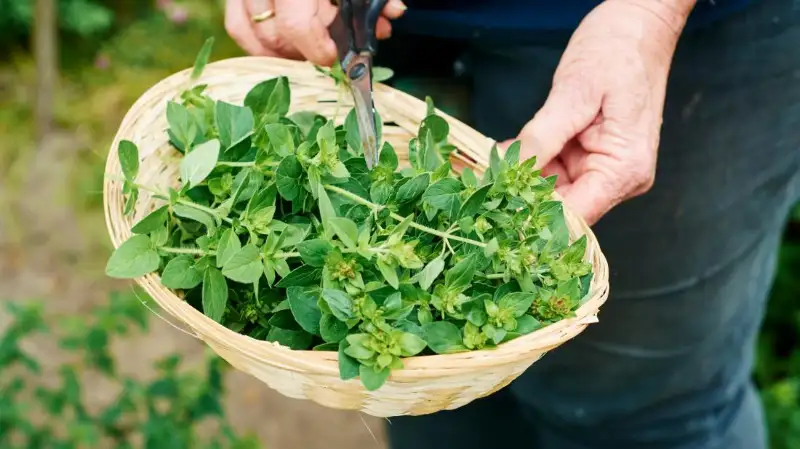
This is one of the perennial herbs and has many properties, such as
• rich in antioxidants,
• helping fight bacteria,
• anti-cancer,
• may reduce viral infection,
• decrease inflammation, and more!
These plants grow in hot and full sun with light soils. They give BEAUTIFUL PINK FLOWERS. It also creates a ground cover at the front of borders.
SOWING THEIR SEEDS in the soil is BEST IN SPRING (when the soil is warm). Or Sow them into POTS INDOORS. We advise you to pinch out vertical growing tips when plants become 10cm tall. It results in increased leafy side shoots.
Final Words
After reading our whole article, you learned a lot about herb gardening. You see gains in your understanding even when you know nothing about it.
It is a minimalist form of us get you started with herb gardening for beginners. You expect a lot more when you move ahead.
FAQs about Beginner Herb Garden
1. Is it cheaper to grow or buy herbs?
It is cheaper to grow herbs than to buy them. You can use as much herb as required from your garden. Most of your herbs go wrong when you buy expensive herbs from the market. It wastes your money and food.
2. What herbs can get planted together?
You can plant the same type of herbs together in a container. Or you could grow those herbs that need the same amount of light, water, and soil nutrition.
3. Which month should you start a herb garden?
In early spring, you should start a herb garden. From January to early April, you can sow basil, chives, and parsley under glass. And you can sow seeds of chervil, coriander, and dill into the soil directly from March onwards.
What’s Next
We enticed you by listing very few types of herbs and some related stuff about them. Then we moved on to the basics of herb gardening for beginners. It includes finding a perfect place to prune.
You read some things to consider. Next, you learned great reasons for growing herbs. You also figured out an easy way to choose which herbs to grow and even some familiar names.
Visit our website for reading more such articles on gardening.
If you want to start doing HERB GARDENING, check out AsterGardening for even more tips and tricks. Even when you are a beginner, you will LEARN A LOT BY NEW READS. Trust us. Your herb garden will be a lovely place for herbs spread!
And IF YOU’RE FACING ANY ISSUES IN GROWING ANY HERB, you can reach out to us – we’re here to help !
